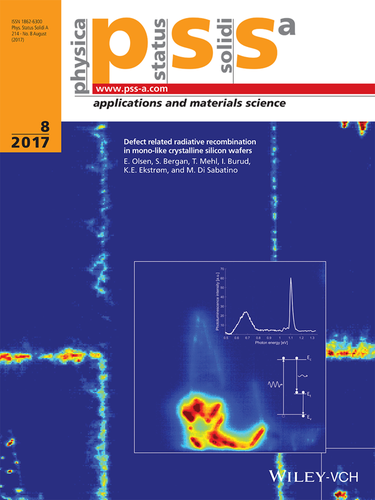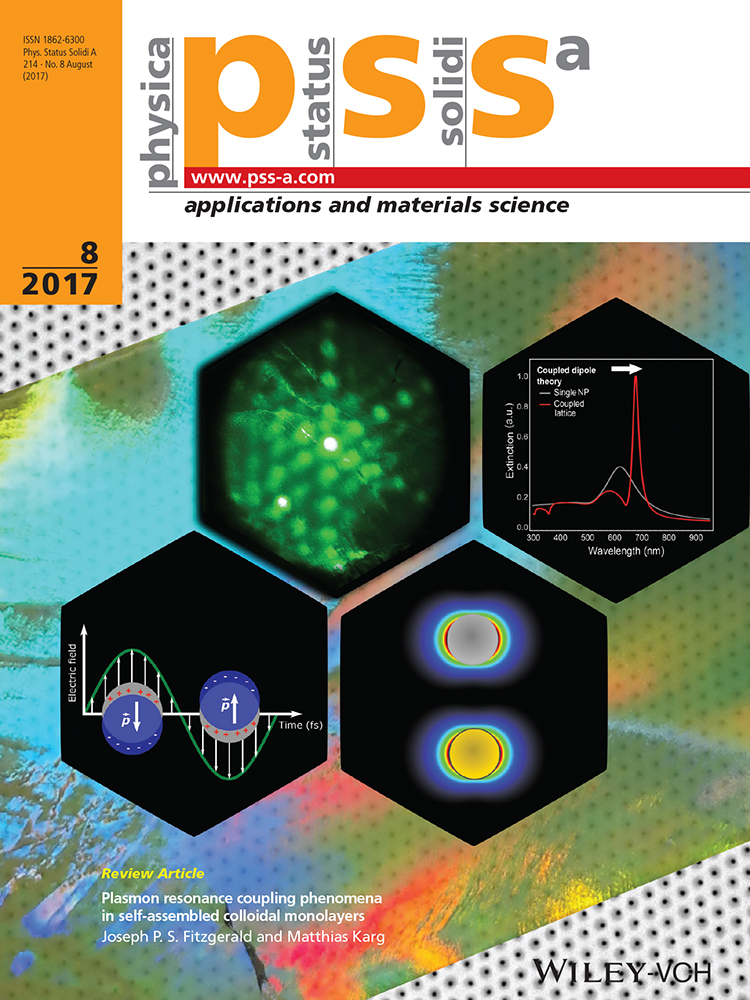Defect related radiative recombination in mono-like crystalline silicon wafers (Phys. Status Solidi A 8∕2017)
Graphical Abstract
In order to improve wafer based silicon solar cell performance with even lower costs, new methods for manufacturing the material are constantly being developed. One approach is to use low cost block casting to make material with primarily monocrystalline character, called mono-like silicon. Unfortunately, crystal faults readily form and multiply in this structure. These cause the recombination of photogenerated charge carriers lowering the efficiency of solar cells. The socalled D-line emissions are four luminescence signals (D1–D4) emanating from photoexcited silicon. They are caused by radiative recombination via traps in the band gap and are reported to always occur together in dislocated areas. The behaviour of the D-line emissions as function of position in a block of mono-like silicon has been studied by Olsen et al. (article no. 1700124). The emissions behave differently suggesting they do not have the same origin. A new signal (0.70 eV) is found in areas where the mono-like character is lost due to formation of material with multicrystalline character. These areas are highly dislocated, however do not exhibit the D1–D4 emissions.





